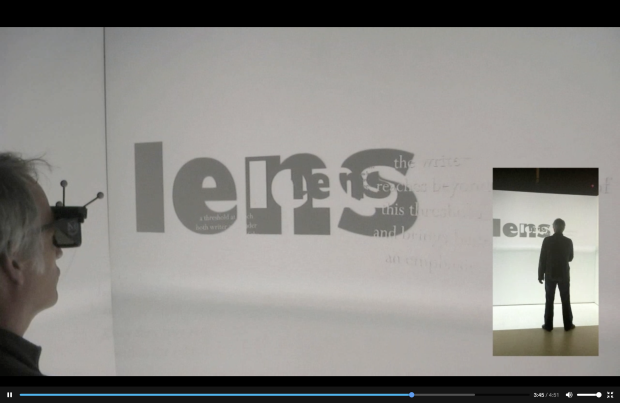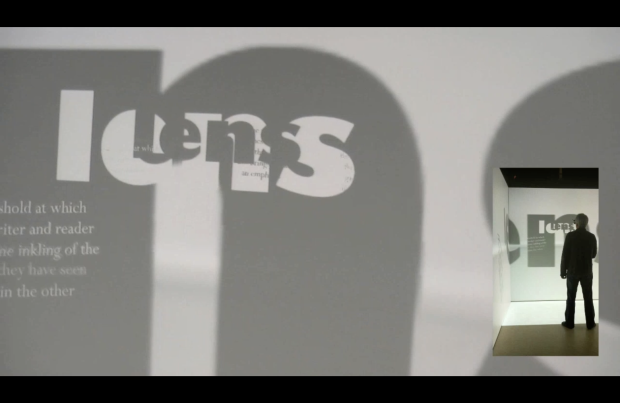lens
lens began as a study piece relating to work-in-progress for the four-wall VR Cave at Brown University. It demonstrates how literal materiality - the surfaces of letters composing the texts of 'lens' itself - can, in a simple illusory 3D space, subvert our familiar experiences and assumptions concerning surfaces of inscription. For example, by making a letter large enough within the programmatic structures of lens, the region of colour defining the letter-shape becomes an entirely different type of surface - it becomes a surface of inscription for other texts that had been perceived 'underlying' it. In doing so, literal surfaces subvert our experience of space and relative distance. Surfaces that were 'in front' now form surfaces for other texts. They may even become other 'spaces' within which writing drifts. Letters both delineate and redefine spatial relationships.
No great claims are made for the aesthetic or literary value of lens in its present form. It is technically simple and has technical constraints. In the QuickTime version, there is no attempt to render a genuine illusion of 3D space (no 3D graphics are employed). 'Distance' is rendered by scale alone, and scaling of fonts (via sprites) in QuickTime still leaves much to be desired.
(Source: Author's description on the project site)
lens requires a recent version of QuickTime (6.5.x or better) to be installed on your system. It has been tested on Mac OS X systems and on a Windows XP machine. Despite QuickTime being cross-platform, it looks different on different platforms. Please Note that, for reasons that are unclear to me (I have submitted this as a possible QuickTime bug) this movie does not behave as expected when using the Universal (default) version of the QuickTime Player on new Macs with Intel processors. You can (if you are willing) make it work properly on such machines: quit the QuickTime player (if it is running); go to the Applications folder; highlight QuickTime Player; press Command-I to 'get information'; check the box labelled 'Open using Rosetta'. (This makes the player run as a PowerPC version and (at the time of writing) it causes 'lens' to function as I expect it to on Intel Macs.)





